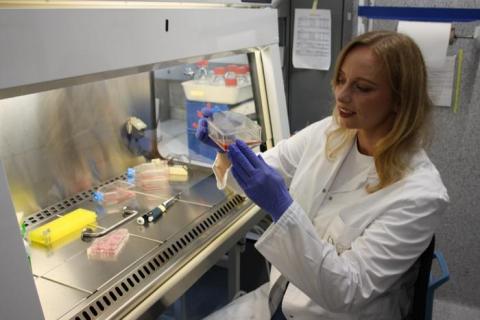An international team, co-led by researchers from the CNAG in Barcelona, has developed a new technique that allows millions of individual cells to be analysed at the same time without the need for sequencing, using what is known as spatial genomics. The technique, called STAMP, could make this type of analysis cheaper and more widespread. ‘We are opening the door to revolutionary advances in precision medicine, enabling the development of highly targeted diagnostics and therapies capable of transforming clinical outcomes,’ say the authors, who publish their findings in the journal Cell.

Ana Dopazo - célula única EN
Ana Dopazo
Head of the Genomics Unit at the National Centre for Cardiovascular Research (CNIC)
The ability to analyse cells at the individual level (rather than studying many together as was done before) is dramatically improving our fundamental understanding of biology, allowing us to better understand how cells function, how they differ from one another, how they change in diseases such as cancer, etc.
This is enabling discoveries that were previously impossible and that will undoubtedly have an impact on all areas of biology and, of course, on clinical practice in all medical disciplines. Given this hugely important potential impact, since the so-called single-cell year in 2013, the technology for studying individual cells has improved greatly and has continued to advance, and we are still going strong.
This rigorous and comprehensive work in Cell is therefore very timely. It comes at a time characterised by exponential technological advances that seek to further improve the study of individual cells. The technical advances are so many and so rapid that even those of us who work in this field are unable to keep completely up to date.
One of the necessary improvements that this work rightly addresses is the reduction in the cost of single-cell analysis. In most current methods, the transcriptome (i.e., the RNA that represents the set of genes being expressed) of each of the cells studied is analysed using sequencing techniques. Although high costs are not solely due to sequencing, sequencing many individual cells is expensive. Costs rise as the number of cells to be sequenced increases, and sometimes the experimental design requires the analysis of a very large number of cells, which can make experiments prohibitively expensive.
Another important novelty of the technique developed is that, together with transcriptomic profiles—obtained using imaging technologies rather than sequencing—it provides information on cell morphology.
The potential of this technique to identify rare or low-abundance cell types, another major limitation of current single-cell studies, is also very interesting. Low-abundance cells can be crucial for specific biological processes and of great functional importance!
The limitations of the technique described in this publication are clearly pointed out in the article itself.
- Research article
- Peer reviewed
- Experimental study
Pitino et al.
- Research article
- Peer reviewed
- Experimental study



